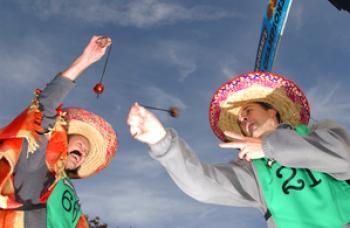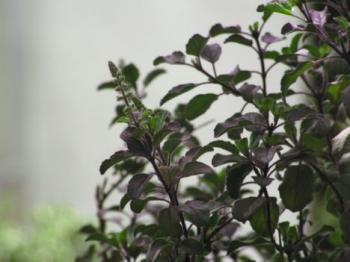Filmmaker and photographer Louie Psihoyos is co-founder of the Oceanic Preservation Society—an organization focused on the “evident decline” of the planet’s oceans—and the man behind this year’s Academy Award winning documentary, The Cove.
Psihoyos was first introduced to Ric O’Barry while attending a conference on marine mammals in San Diego. O’Barry, he notices, has been removed as the main speaker by the event’s sponsor—research institute and theme park operator Sea World.
Ric O’Barry was the trainer of “Flipper,” the famous TV-dolphin, in the 1960s. In all, five female dolphins swam before the cameras as “Flipper” over the duration of the popular series. All of them were caught and trained, and housed by O’Barry.
Eventually, he begins to realize that the dolphins were suffering terribly in the concrete basins he keeps them in. Their extremely sensitive ultrasonic sense of hearing, with which they orient themselves in the sea, can hear even a human’s heartbeat.
Then, one day, dolphin Cathy dies in Ric O’Barry’s arms. “She had suffered so terribly, I could feel it, I could see it. She had committed suicide in my arms.”
Ric explains that dolphins don’t breath automatically like humans. “Every breath they take is an intended action. When their life becomes too unbearable they can put an end to it just by breathing no longer. For that reason I use the word suicide. Cathy had done so. She swam in my arms, saw directly in my eyes, and took a deep breath ... and stopped breathing ...”
From then on, he changed his course of life.
In April 1970, Ric O’Barry founded the Dolphin Project, an organization dedicated to releasing captive dolphins still capable of surviving in the wild. For nearly 40 years he has been fighting an industry he helped to establish.
He admits, “I feel somehow responsible because it was the “Flipper” series, which has made the multi-million dollar business rolling.”
He has been arrested numerous times for releasing dolphins. His work is dangerous. “A dolphin at the right place can earn a million dollars per year. There’s a lot of money in it. When one gets into their way and I get into their way, this can become very, very dangerous.”
Two of his colleagues have been killed because of their work.
The Japanese town of Taiji is the world’s biggest provider of dolphins to sea parks and “swimming with the dolphin” programs. $150,000 is paid for every dolphin.
According to O’Barry, dolphin meat is even sold as food, despite its toxic levels of mercury, and fisherman are paid $600 for a dead dolphin.
In Taiji, the risks in eating dolphin are covered up by the government,while the mayor of Taiji is planning a campaign in which dolphin meat is to be distributed without charge to Japanese schools. What’s more, O’Barry’s team discovers that dolphin meat is being sold under the label of expensive whale meat, in stores. It becomes clear where 23,000 slaughtered dolphins disappear to each year.
The film chronicles this Japanese dolphin operation. Everything appears to be running relatively normally—adequate animals for sea parks are caught and evacuated in boats. But then small boats disappear to a secret cove, which is shielded by rocks from three sides in order to handle the rejected dolphins. One can reach this secret hideout through several tunnels. The area is protected through gates and high fences of barbwire.
For years activists have been trying to reveal the proceedings in Taiji. Ric O’Barry made the media come on site—the BBC, the London Times, and the Time Magazine. But all of them had to retract empty-handed. Ric O’Barry only sees one chance: a secret mission.
A team of specialists consisting of free-divers, high-tech experts, and adventurers, whose hearts were in it, was composed. They set out for Japan with 47 bags. In several actions. they hid underwater cameras and acoustic recording devices in the secret cove.
What they filmed is no less than shocking evidence, which rightfully earned them the Best Documentary Oscar at last week’s Academy Awards.
Psihoyos was first introduced to Ric O’Barry while attending a conference on marine mammals in San Diego. O’Barry, he notices, has been removed as the main speaker by the event’s sponsor—research institute and theme park operator Sea World.
‘They called him Flipper, Flipper, faster than lightning …’
Ric O’Barry was the trainer of “Flipper,” the famous TV-dolphin, in the 1960s. In all, five female dolphins swam before the cameras as “Flipper” over the duration of the popular series. All of them were caught and trained, and housed by O’Barry.
Eventually, he begins to realize that the dolphins were suffering terribly in the concrete basins he keeps them in. Their extremely sensitive ultrasonic sense of hearing, with which they orient themselves in the sea, can hear even a human’s heartbeat.
Then, one day, dolphin Cathy dies in Ric O’Barry’s arms. “She had suffered so terribly, I could feel it, I could see it. She had committed suicide in my arms.”
Ric explains that dolphins don’t breath automatically like humans. “Every breath they take is an intended action. When their life becomes too unbearable they can put an end to it just by breathing no longer. For that reason I use the word suicide. Cathy had done so. She swam in my arms, saw directly in my eyes, and took a deep breath ... and stopped breathing ...”
From then on, he changed his course of life.
Life-Threatening Activism
In April 1970, Ric O’Barry founded the Dolphin Project, an organization dedicated to releasing captive dolphins still capable of surviving in the wild. For nearly 40 years he has been fighting an industry he helped to establish.
He admits, “I feel somehow responsible because it was the “Flipper” series, which has made the multi-million dollar business rolling.”
He has been arrested numerous times for releasing dolphins. His work is dangerous. “A dolphin at the right place can earn a million dollars per year. There’s a lot of money in it. When one gets into their way and I get into their way, this can become very, very dangerous.”
Two of his colleagues have been killed because of their work.
Inside the Cove
The Japanese town of Taiji is the world’s biggest provider of dolphins to sea parks and “swimming with the dolphin” programs. $150,000 is paid for every dolphin.
According to O’Barry, dolphin meat is even sold as food, despite its toxic levels of mercury, and fisherman are paid $600 for a dead dolphin.
In Taiji, the risks in eating dolphin are covered up by the government,while the mayor of Taiji is planning a campaign in which dolphin meat is to be distributed without charge to Japanese schools. What’s more, O’Barry’s team discovers that dolphin meat is being sold under the label of expensive whale meat, in stores. It becomes clear where 23,000 slaughtered dolphins disappear to each year.
The film chronicles this Japanese dolphin operation. Everything appears to be running relatively normally—adequate animals for sea parks are caught and evacuated in boats. But then small boats disappear to a secret cove, which is shielded by rocks from three sides in order to handle the rejected dolphins. One can reach this secret hideout through several tunnels. The area is protected through gates and high fences of barbwire.
Mission Possible
For years activists have been trying to reveal the proceedings in Taiji. Ric O’Barry made the media come on site—the BBC, the London Times, and the Time Magazine. But all of them had to retract empty-handed. Ric O’Barry only sees one chance: a secret mission.
A team of specialists consisting of free-divers, high-tech experts, and adventurers, whose hearts were in it, was composed. They set out for Japan with 47 bags. In several actions. they hid underwater cameras and acoustic recording devices in the secret cove.
What they filmed is no less than shocking evidence, which rightfully earned them the Best Documentary Oscar at last week’s Academy Awards.


